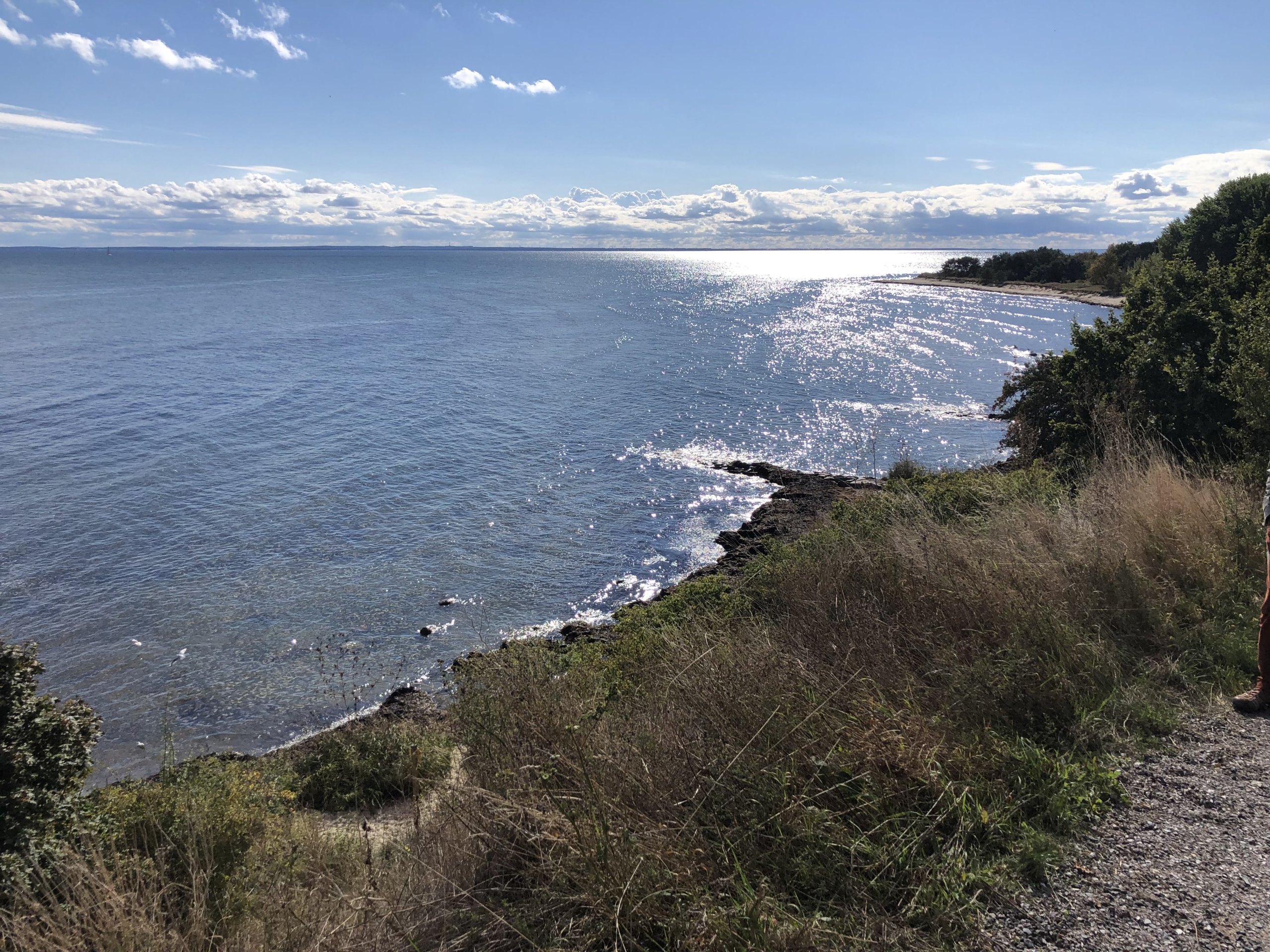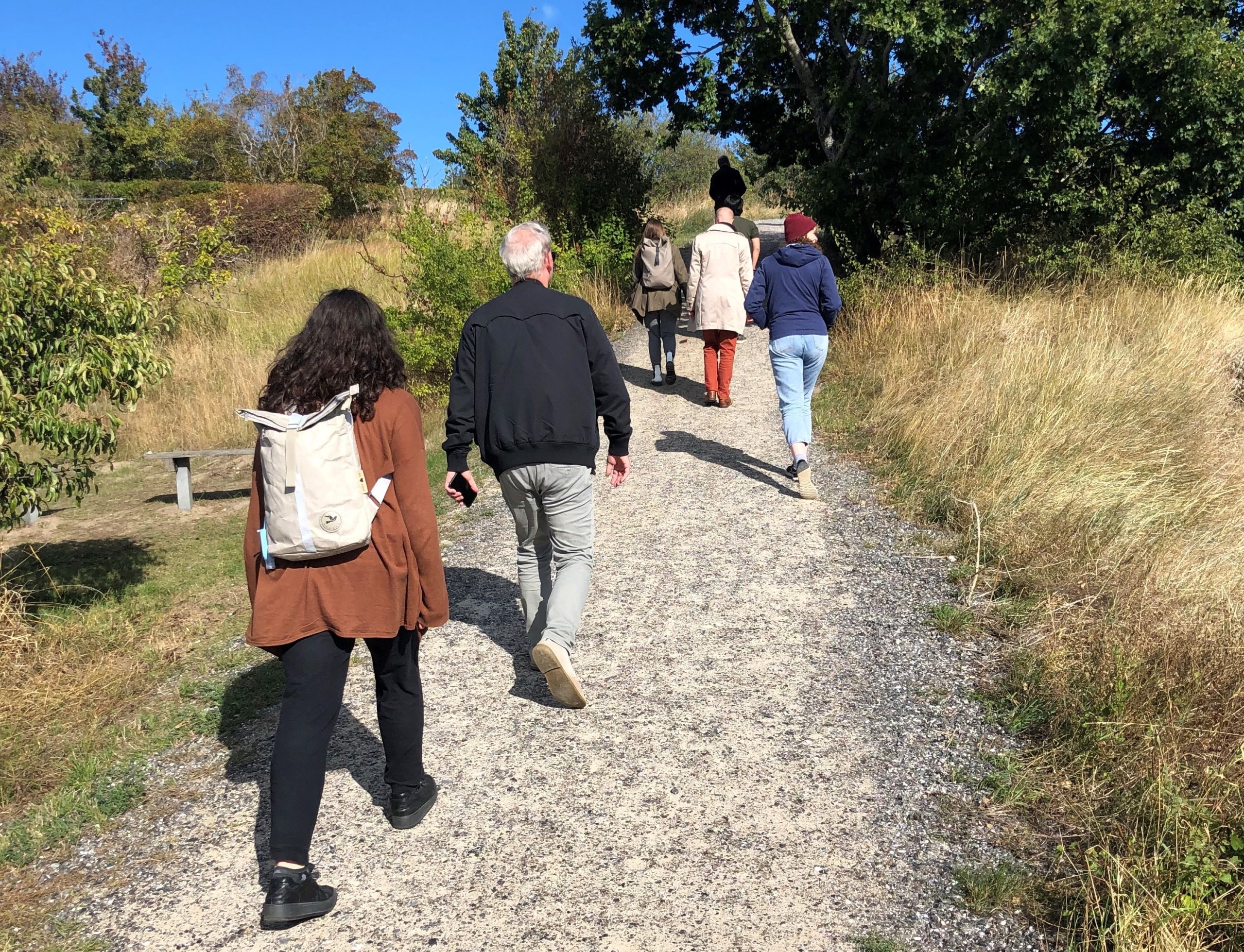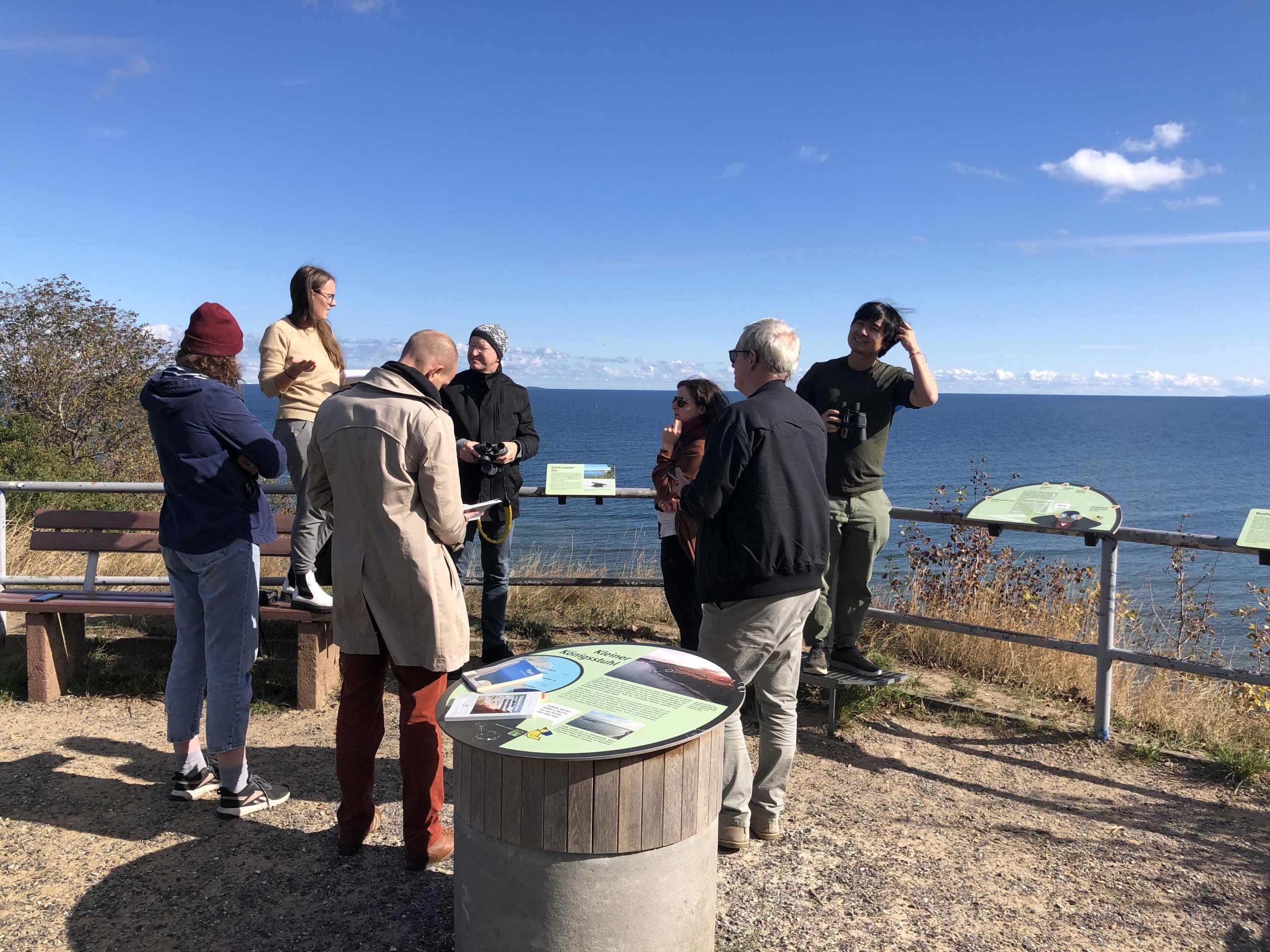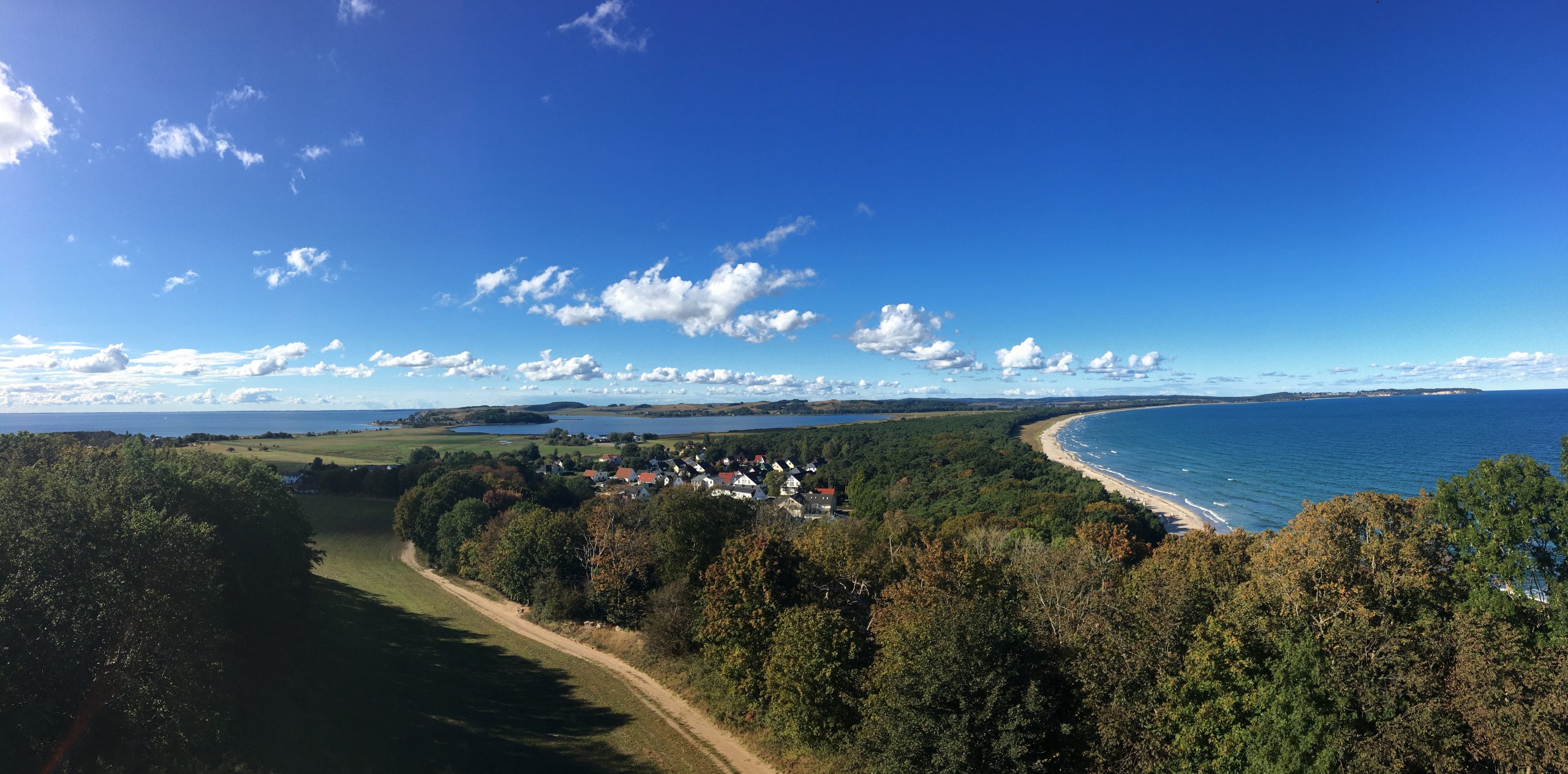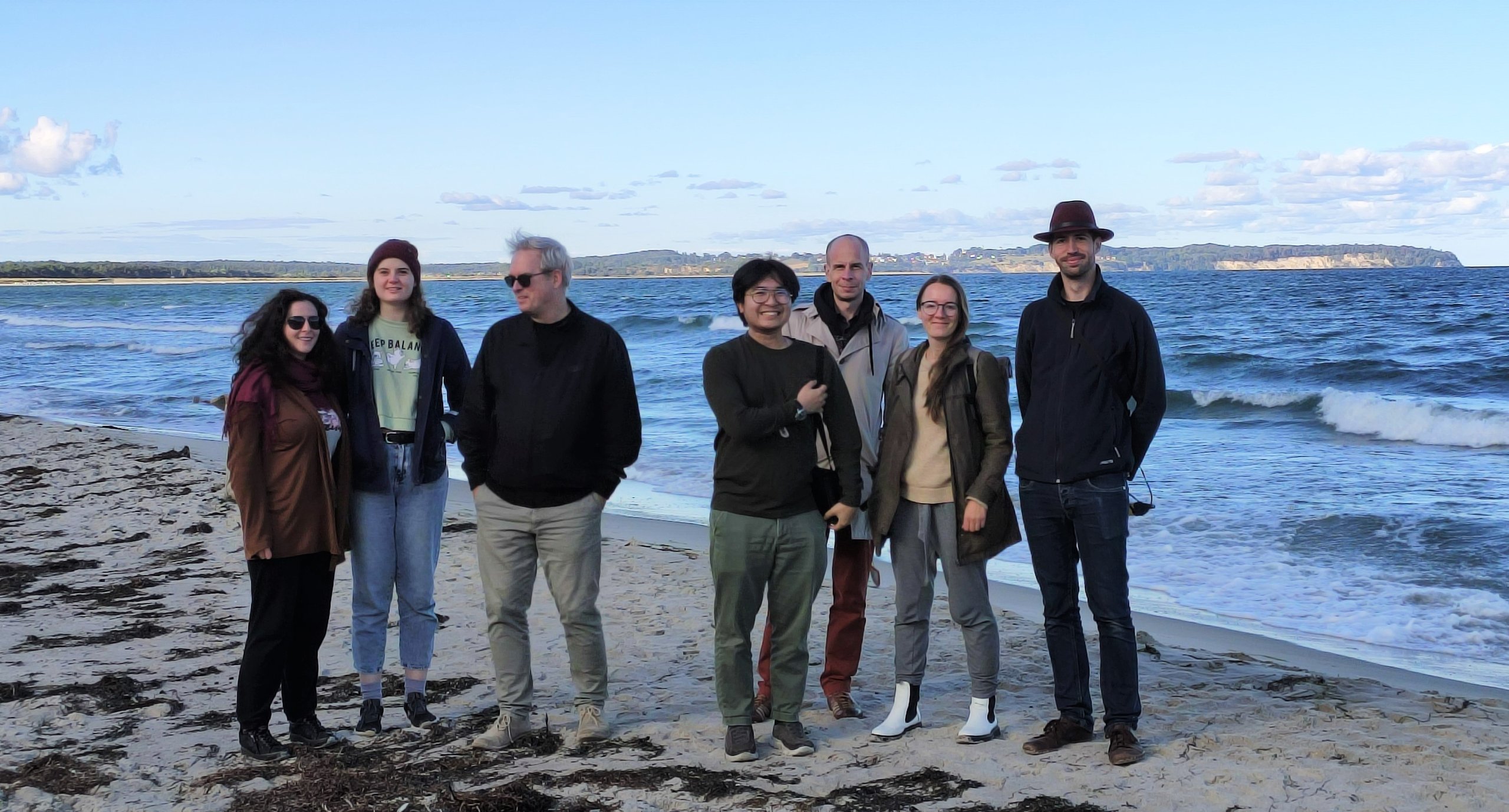After learning about this storm surge, which is the earliest that we have several sources regarding, the tour continues to the top of the hill, where we climb the Lotsenturm (“Pilot´s Tower”). From there, we have a stunning view to the north over part of the Mönchgut Peninsula. Looking at the landscape, it is easy to see how dependent and vulnerable the communities here have been concerning the sea and its moods. Long, thin stretches of land lay next to bays reaching far inland, so that the coast is never far away.
Exactly how dangerous this can be, we learn from the account of pastor Emil Steurich in the nearby village of Groß Zicker, written in 1905 after witnessing the New Years flood in the night of the 31st of December 1904. Damaging houses and destroying boats, this flood surprised the inhabitants of the region, who quickly had to get to safety and could not believe what was happening:
“[…] everyone went to bed without worries. During the night, however, the unexpected happened: The wind suddenly shifted to the northeast and blew with hurricane-like force. The temperature, which had been mild, quickly dropped to 5 degrees below zero, and dense snow fell. Now the water rose with uncanny speed.” (Paries 1996, 211)
The fear and desperation one must feel when encountering such a catastrophic event becomes apparent through the pastor´s words:
“If at first I had been drawn to the beach by interest in the great spectacle of nature, this feeling had been completely lost and only that of horror and dejection remained. We are now defenselessly exposed to the sea and, after these destructions, are in extreme danger. How much more time will be given to our little country?!” (Paries 1996, 214)
With this in mind, we descend from the tower towards the beach, where the Baltic Sea again welcomes us, showing its most peaceful mood. It almost seemed unreal, what kinds of events we had just heard about, as we conclude our excursion with a walk where the waves meet the beach, thinking to ourselves: Indeed, how much more time will be given to this little piece of land?
Hopefully, a long while!
